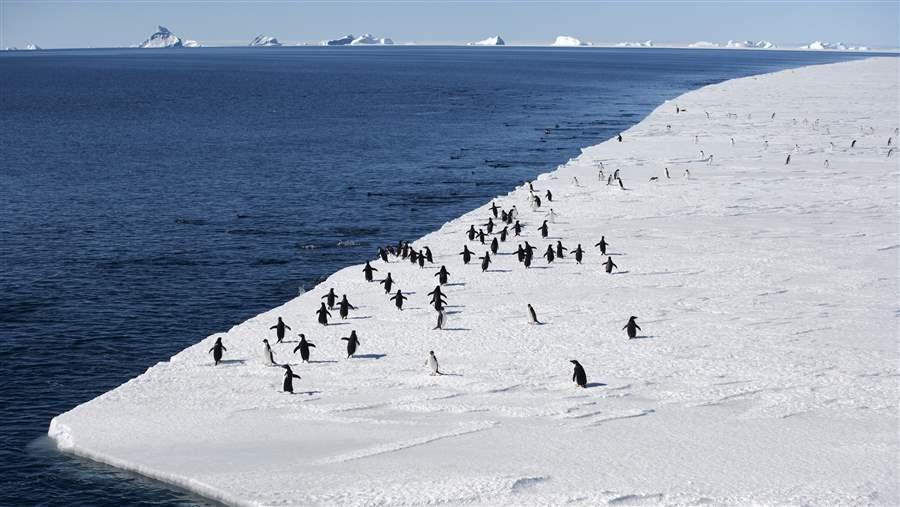More Antarctic Marine Protections Needed at CCAMLR
Beginning Oct. 16, Member countries of the Commission for the Conservation of Antarctic Marine Living Resources (CCAMLR) will meet for two weeks in Hobart, Australia, to determine the fate of marine conservation in the Southern Ocean.
Last year, CCAMLR designated the world’s largest marine protected area in the Ross Sea, which goes into effect Dec. 1. This year, decisions are expected to be made to continue momentum towards CCAMLR’s commitment to create a network of marine protected areas (MPAs) throughout the region by designating reserves in the waters off East Antarctica, the Weddell Sea, and the Antarctic Peninsula.
Establishing additional MPAs throughout the Southern Ocean would allow marine species to travel between individual protected areas to breed and forage, while preserving the connectivity among the numerous unique ecosystems found throughout the region. A network of MPAs would ensure that these intact and biodiverse regions are preserved for science and conservation purposes. And the collective area covered by a network of MPAs would also significantly contribute to the goal of protecting 30 percent of the world’s ocean.
A Southern Ocean MPA network would be the first of its kind in the high seas and would provide long-term protection for millions of penguins, whales, and seals, and for the source of critical nutrients in the world’s ocean.
Also up for consideration this year is a research and monitoring plan for the Ross Sea Region MPA, which is critical for determining how the designation is affecting ecosystem health.
Related Resources


This video is hosted by YouTube. In order to view it, you must consent to the use of “Marketing Cookies” by updating your preferences in the Cookie Settings link below. View on YouTube
This video is hosted by YouTube. In order to view it, you must consent to the use of “Marketing Cookies” by updating your preferences in the Cookie Settings link below. View on YouTube


This video is hosted by YouTube. In order to view it, you must consent to the use of “Marketing Cookies” by updating your preferences in the Cookie Settings link below. View on YouTube
This video is hosted by YouTube. In order to view it, you must consent to the use of “Marketing Cookies” by updating your preferences in the Cookie Settings link below. View on YouTube





















